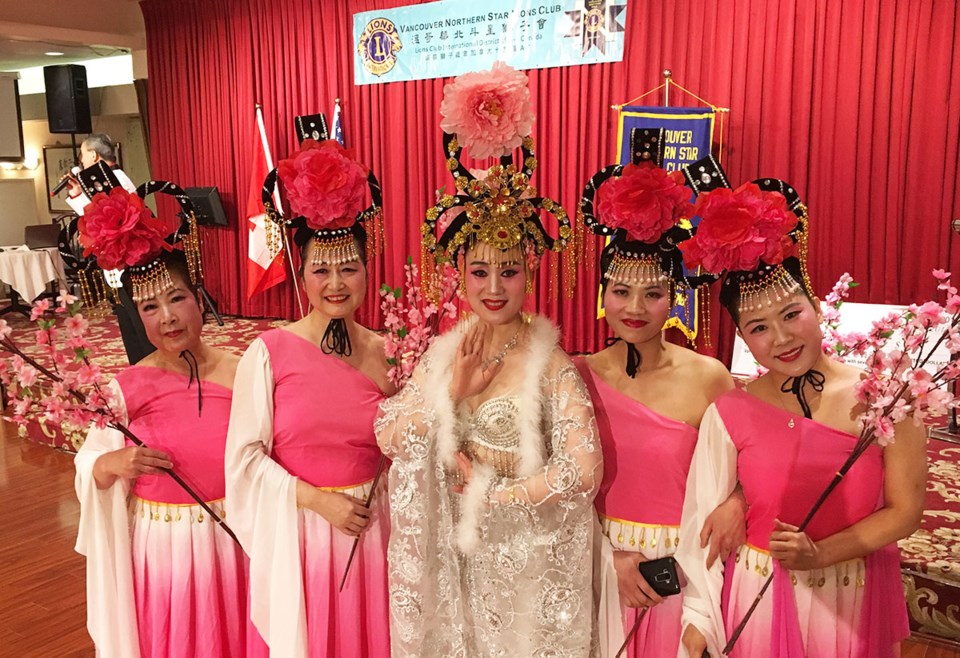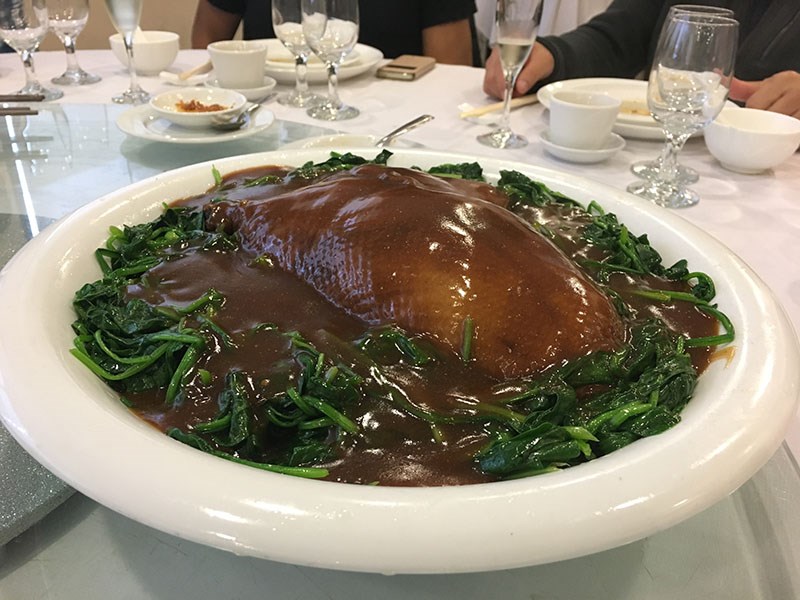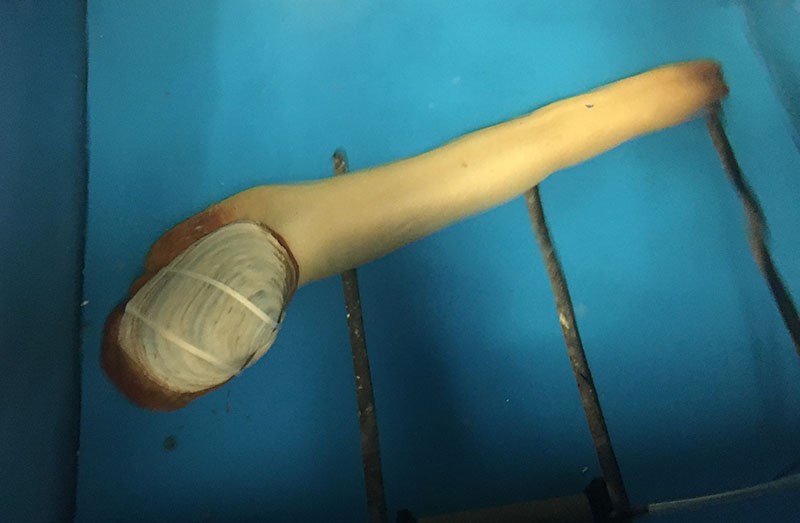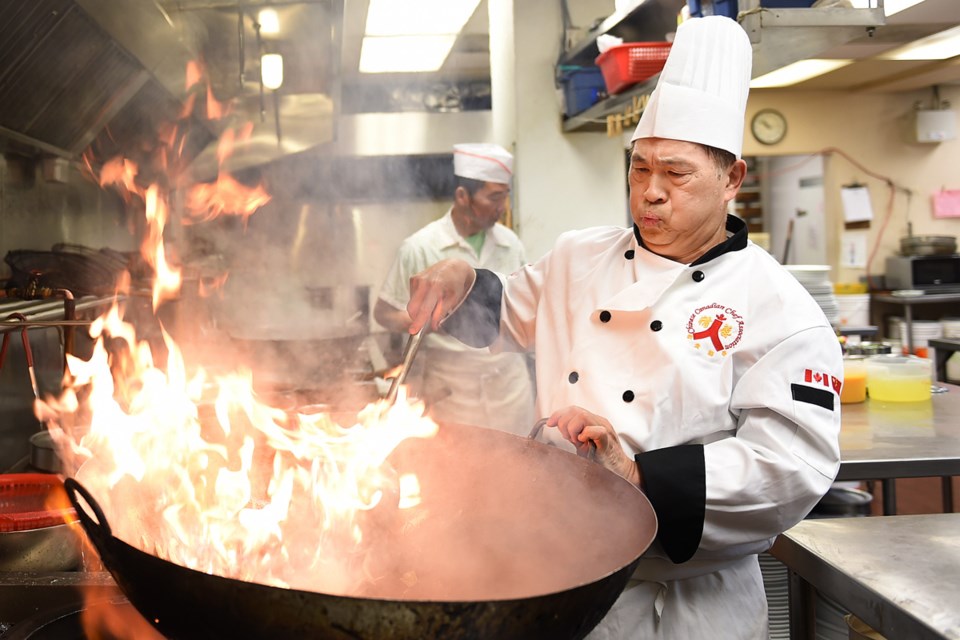âSmell the wok energy,â Stephanie Yuen says as a big plate of noodles and vegetables is brought to the table of the Pink Pearl.
As steam rises from dish, the vegetablesâ aromas also drift up, their flavours released after exposure to the high heat and oils of the heavy cast-iron wok. Itâs this combination of heat and freshness that Chinese chefs pride themselves on, Yuen says at a recent media dinner she organized at the East Hastings restaurant.
âItâs the magic or alchemy of how fast the chefs can use the spatula,â adds fellow diner Claudia Kwan who, from the age of three, has been visiting Chinese restaurants across Vancouver, listening to her family judge and rate the chefsâ techniques.

In the kitchen, creating this magic takes an incredible amount of strength and stamina. Some of the woks are 32 inches wide and a quarter-inch thick. Heavy enough on their own, when filled with enough vegetables to fill the plates of several tables in the banquet hall, and itâs not just the heat from the stove thatâs causing the chefsâ faces to flush with exertion as they repeatedly use their hands and legs to manage the wok while they flip the contents in the air.
By the end of the night, executive chef Kuen Kwan, chef de cuisine Tommy Yip and the rest of the Pink Pearlâs kitchen staff are visibly tired. The media dinner is over but theyâre still feeding the 20 or so tables of 10 for a Lions Club dinner in the banquet hall.
Yip started work in the kitchen when he was 12 and does not have fond memories of how tough the job was. He was given money to cover food and lodging but little else. Kwan was out of high school when he set off on this career path and is also well accustomed to its physical demands. And although those demands have not waned, theyâre balanced by the pride they take in pleasing a very demanding clientele.
The Pink Pearl, which opened in 1980, is now Vancouverâs oldest continuously operating Chinese restaurant in its current location. It had a three-year hiatus after a fire in 2009 and this year, to celebrate the fifth anniversary of its reopening, Yuen has pored over menus from the past to come up with 10-course dinner that highlights favourite dishes from each decade.
In those early years, chefs didnât have access to the delicate Chinese greens they were accustomed to so they adapted by taking traditional dishes, such as stuffed deboned chicken wings, and incorporating local vegetables.

By the 1990s, dishes such as wintermelon soup and delicious lotus root patties could appear on the menu. Broccoli was joined by an array of boy choy and various greens. A decade later, the Fraser Valley began supplying ducks that were worth the time-consuming task of creating steamed eight treasure duck â the duck is marinated, hung to dry, deep fried, stuffed and steamed (which is why the restaurant requires 48-hours notice.)
The recent influx of rich Chinese immigrants is changing the dining scene in Vancouver, Yuen says. âThese folks show off and donât understand about food and wine,â she says. Vancouverâs conventional Chinese restaurants remain more focused on a cornerstone of a familyâs dining out experience â taste and value.
For instance, the chefs donât put much emphasis on plating because if they do, too much time will have elapsed between the time the food is in the wok and in front of a customer. âAt a family dinner, dishes come out in 30 seconds so you get the aroma. People donât care too much about plating because then thereâs not much wok energy,â Yuen says.
Each dish arrives with very little of the plate still visible under the mound of food to show how much value you are getting for your money. Likewise, thereâs an obvious lack of attention to décor. When you drive past the Pink Pearl, screens are pulled down on the windows, giving an already non-descript building even less curb appeal. The VIP room in which the media dinner is held is utilitarian and bereft of adornment.

Traditional Chinese restaurants such as the Pink Pearl âdonât want to âwasteâ money on the décor,â says Kwan, a Global TV reporter whoâs on maternity leave but still active in media world. âThe value on the plate is the most important.â
With so much emphasis on freshness, diners prefer money is spent on such things as a properly maintained fish tank, she adds.
Although the Pink Pearl is known for being one of one or two places that offers dim sum brought table to table on carts, to celebrate its anniversary itâs presenting a 10-course meal that Yuen has curated with favourite menu choices from each of its four decades.
As part of âan unheard-of fundraising campaign in the local Chinese restaurant segment,â when people book a table for 10 to 12 people, net proceeds will benefit the Greater Â鶹´«Ã½Ó³»Food Bank and the Â鶹´«Ã½Ó³»Sowers Society. The menu is available until August 31 for $568, inclusive of tax and gratuity. A minimum 48-hours reservation is required.
The menu is skewered prawns on Asian greens (1980s); deboned and stuffed golden wings (1980s); dried scallop and pureed wintermelon soup (1990s); pan-fried lotus root patties (1990s); consommé-poached vegetables and gokiberries (2000s); steamed eight-treasure Fraser Valley duck (2000s); red snapper wok-fired with fresh lily petals and Chinses chives (2010s); silver needle pasta sautéed with Chinese celery and mushrooms (2010s); and, for dessert, gojoy gojiberries jelly (2010s) and waterchestnut and egg swirl sweet soup (1980s.)



